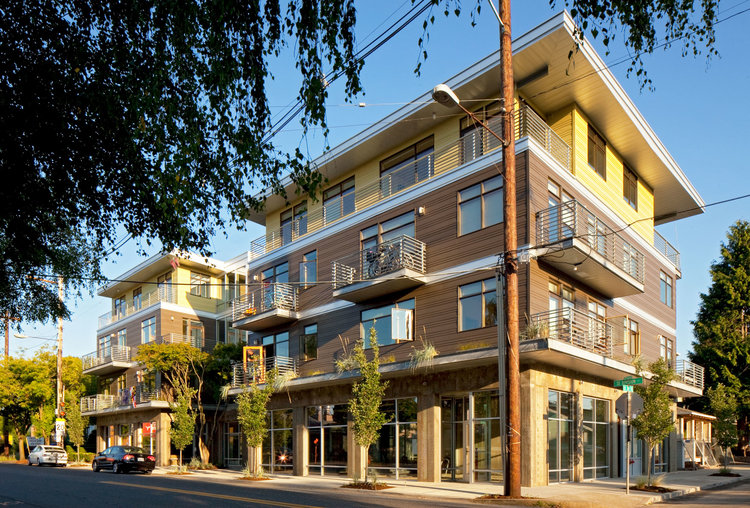Almost every good idea, from sandwiches to light bulbs to bike lanes, follows a similar upward-twisting curve of rising popularity.
First, in a trickle, comes its introduction by a few radicals. Then come the early adopters, the ones who know a good idea when they see it even though it’s off-the-wall. They’re a little more numerous. After that, a deluge of change: those in the “early majority” get exposed to the idea from early adopters and, though they’re not radical themselves, see the idea working and embrace it; after them come the “late majority” and finally late adopters, grudgingly accepting that the new way of things is better.
As of last week, parking reform is leaving the realm of the radical.
The early adopters are moving. And over the next few years, Cascadian cities are likely to join them.
As my colleague Dan Bertolet noted Monday, San Francisco (last Tuesday) and Minneapolis (last Friday) just took the single biggest step toward saner, more economically productive, more socially just parking policy: Both agreed to completely strike down their bans on new buildings that don’t have on-site car storage spaces.
In other words, they decided to stop requiring that corporations conceal the immense costs of auto parking inside the price of every pint of beer, every gallon of milk, every monthly rent check.
Making no-parking buildings an option again is only fair. In Minneapolis, 29 percent of renter households already own zero cars. In San Francisco, it’s 42 percent.
(Here in Cascadia, 15 percent of renter households across Oregon and Washington own zero cars, topping out at 27 percent of Seattle renters. British Columbia doesn’t track this figure, unfortunately.)
By removing their decades-old parking quotas, San Francisco and Minneapolis were following in the steps of two other US cities: Buffalo, New York; and Hartford, Connecticut.
In some ways, these four cities are similar: old-ish, north-ish, and with unusually close-in city limits.
But there’s an important difference between the first two innovators and the two from last week: San Francisco and Minneapolis are booming economically.
In Hartford and Buffalo, the main problem to be solved from parking reform was underinvestment: two relatively disinvested cities were trying to remove barriers to much-needed economic activity in the aftermath of the Great Recession. In San Francisco and Minneapolis, the main threat is bad investment: the current economic boom has poured capital into both cities, and they’re trying to maximize the amount that gets spent on things—like additional homes—that will help their residents most.
This is great news. It proves parking reform is not just a good idea for cities with very different problems, it’s also politically feasible in cities with very different problems. Minneapolis and San Francisco show the way for booming Cascadian cities like Seattle and Richmond. Hartford and Buffalo set examples for flagging ones like Anchorage and Aberdeen.
Here in the Pacific Northwest, parking reform has been advancing steadily since the 1990s and is poised for more progress. In the last few months, the planning commissions of both Portland and Seattle have proposed ending the ban on no-parking homes in low-density areas. Tigard, in suburban Portland, essentially made the same policy official last month when it agreed to let any new residential home count curbside on-street parking spaces toward its parking requirements. In Spokane, 2019 mayoral candidate Ben Stuckart is making parking reform a signature issue.
These cities and more should go further and ban all parking quotas, following the example of their country’s leading innovators. And if parking reform is like most of history’s good ideas, sooner or later they will.









RDPence
Shouldn’t we also be looking at parking maximums? Some upper limits on the amount of parking that builders can build? All those new towers in South Lake Union and elsewhere sit on multiple layers of underground parking ~ put there due to perceived market forces and financier requirements ~ and the result is massive rush hour traffic jams.
Michael Andersen
Great question! I agree that those underground spaces at SLU are a massive waste of everyone’s money and bad for the world.
That said, here is a one-week-old piece on this question that I mostly agree with:
https://medium.com/@AsherOfLA/instead-of-parking-maximums-ban-free-parking-in-new-housing-fcf57e32a596?fbclid=IwAR3AKNA7XCNPHfmvtRDhFoWJsKT_zY7fU3yqFuj3pb2EnXAd7rhC06a39vU
The author gets into some of the finer points of this question, and recommends price floors for parking—as in, “you have to charge at least $200/month for access to every space on site”—as a better policy reaction to overbuilt parking.
I’m not even sure that I personally support that option, though it does seem better than a regulatory maximum. For me, the bottom line is that until/unless we can apply parking maximums everywhere in a particular market (that is, until we can be sure that housing deterred in SLU won’t wind up in Everett or Maple Valley instead) then parking maximums only risk making traffic jams worse. This is made worse by the risk that people opposed to new urban buildings near them might embrace parking maximums as a way to prevent urban infill … which is ultimately what we need more of if we’re going to make urban life affordable to everyone.
Howard Metzenberg
I suggest that there is actually another reason why they are building what seems to us at present to be unnecessary parking. Although the average cost of these empty parking spaces is very high, the marginal cost of the last one’s built is much lower.
The extra parking is being created for option value. Many of the real estate companies that own these apartment buildings know that they are going condominium eventually. They would have built them as condos in the first place, except that Washington has a law the imposes very strict liability rules on new condominium development, so that it is far less risky to rent a building out for a few years and then convert it.
The article in The Medium has a serious flaw! There is no way to determine and charge for parking based on cost, because of a basic economic problem, what is cost?
What do you include in figuring cost? Is it the value of construction? Does it include the value of the land? And if it does, how do you even determine the value of the land, when there are no separate transactions for raw land and all land is either improved or degraded for particular uses.
What about marginal versus average cost? The foundation for economic analysis is the use of marginal analysis to produce pricing efficiency, but marginal costs are a business secret, and very dependent on the construction site, as well as scale.
R. John Anderson
Municipalities have done such a lousy job of guessing how much parking is needed. Let’s get them out of that business. It is reasonable to regulate where parking can be located and configured on a private parcel, but let’s not have the city try to guess how much parking is enough or how much is too much.
Laura Feldman
No parking buildings would be fine if they included low-income units and if we had a functional transit system in Portland.